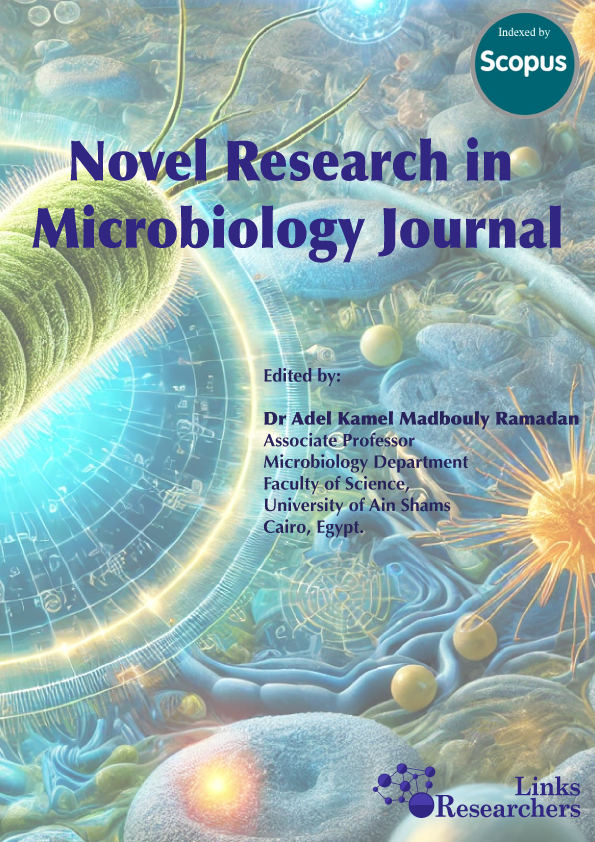Comparative genomic analysis of enterobacterial clinical isolates reveals differences in resistome and stress signaling pathway
Novel Research in Microbiology Journal (2024), 8(5): 2653-2665
Comparative genomic analysis of enterobacterial clinical isolates reveals differences in resistome and stress signaling pathway
Sarah Sonbol1; Nahla A. Hussein2*
ABSTRACT
The Enterobacteriaceae is a large family of bacteria that includes many important bacterial pathogens known for their high virulence and contributions to the global antimicrobial resistance threat. We aimed, through this study, to provide a comparative overview of the genomes, resistance determinants, and stress signaling pathway of 22 enterobacterial clinical isolates. Our results showed that Escherichia coli harbored the lowest percentage of core genes (44 % versus 58 % in Salmonella enterica, and 52 % in Klebsiella pneumoniae) and the highest percentage of strain- specific genes (31 % versus 18 % in S. enterica and 24 % in K. pneumoniae). All bacterial strains included in the analysis encoded genes for resistance to commonly used antibacterials, including cell envelope acting antibiotics, aminoglycosides, quinolones, and sulphonamide. The resistance genes showed different distributions among the core, dispensable and/or strain-specific genomes, ranging from an almost equal distribution in E. coli and S. enterica to higher occurrence in the dispensable/ strain specific genome in K. pneumoniae. Depending on the bacterial genus, cell envelope acting antibiotics occupied between 15 % - 30 % of the core genome resistome. In addition, the sequence diversity of different proteins of the signalling pathway “the regulator of colanic acid capsule synthesis” (Rcs), which is involved in sensing and responding to cell envelope threats was examined. High diversity of two domains in Rcs system proteins (i.e., IgaA first cytosolic domain and RcsD pseudokinase) was observed despite high conservation of all other proteins. All these differences might point out to specific adaptation strategies of the studied bacterial isolates to antibiotic exposure and ecological niche variation.
To share on other social networks, click on any share button. What are these?






